Selecting the perfect lighting for an open floor plan kitchen and dining area can be challenging, but it’s also an opportunity to create a cohesive yet distinctive design. While matching fixtures might seem like the easy route, a thoughtful mix of lighting styles is the key to a well-balanced and stylish space.
Since kitchens require bright, task-oriented lighting and dining areas benefit from a softer, more ambient glow, different lighting choices help define each space while maintaining harmony. Let’s explore stylish ways to pair kitchen and dining lights for a designer-inspired look.
Why is Pairing Kitchen and Dining Lights Important in an Open Floor Plan?

Creating a balance between kitchen and dining lighting in an open floor plan is essential for both functionality and aesthetics. The kitchen requires bright, task-oriented lighting to facilitate cooking and food preparation, whereas the dining area benefits from a more ambient, inviting glow. A well-thought-out lighting scheme helps to visually define each space while ensuring a seamless transition between them.
Simple & Modern Lighting for Kitchen and Dining Spaces
For a sleek and contemporary feel, opt for clean-lined fixtures that make a statement without overpowering the space.

- Kitchen: Enamel-coated metal pendant lights or simple industrial fixtures add a modern edge while providing bright illumination.
- Dining: Retro-inspired exposed bulb fixtures or minimalist wall sconces create a relaxed atmosphere and stylish contrast to the kitchen’s task lighting.
This combination allows for functional lighting in the kitchen while maintaining a softer, inviting feel in the dining area.
Glass Pendant Light Fixtures for Coordinating Kitchen and Dining Areas
Glass light shades with metal fixtures have become a favorite for modern interiors. Their transparency adds an airy, elegant feel without overwhelming the space.
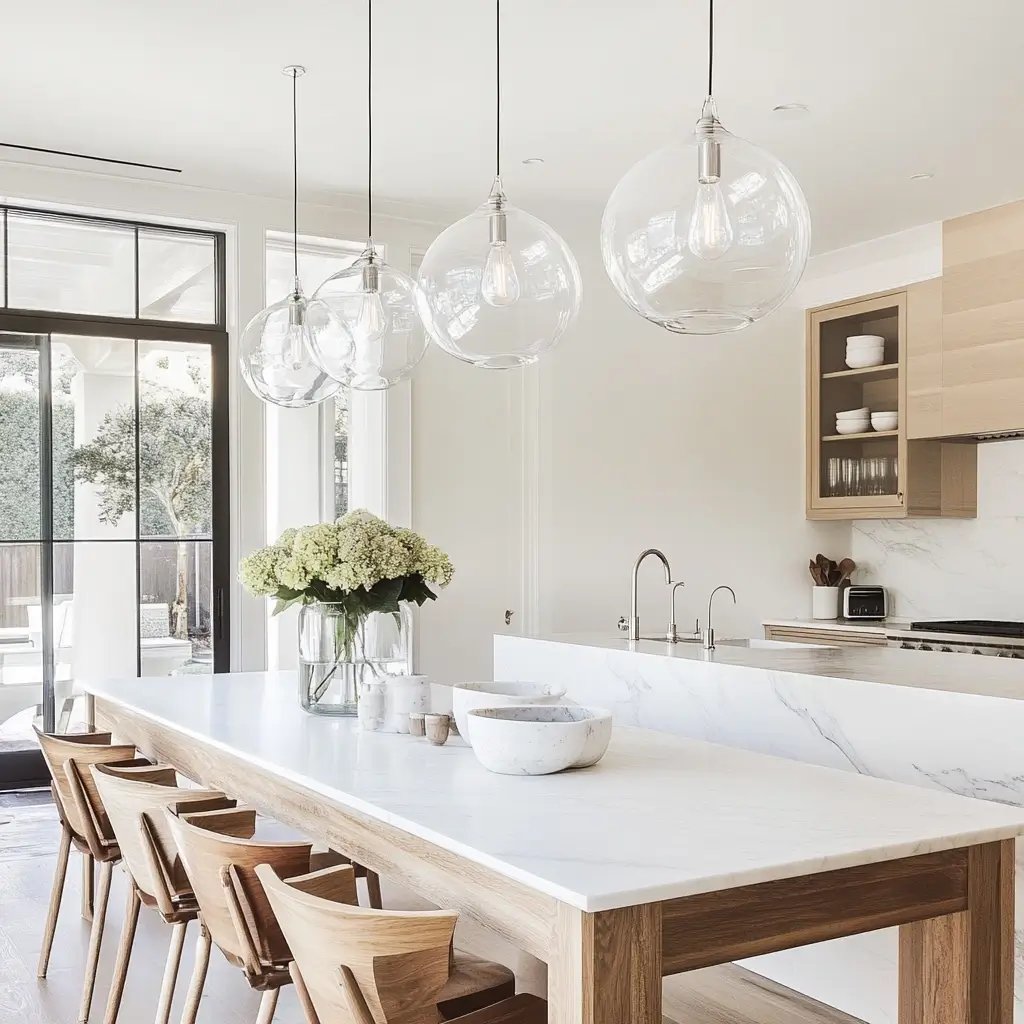
- Kitchen: A pair of large glass pendants over the island provides maximum illumination while maintaining a chic look.
- Dining: A cluster of smaller glass pendants over the table creates a soft, romantic ambiance while tying in with the kitchen’s lighting theme.
This pairing ensures visual continuity while allowing each space to shine in its own way.
How Do Wood Accents Enhance Kitchen and Dining Lighting?
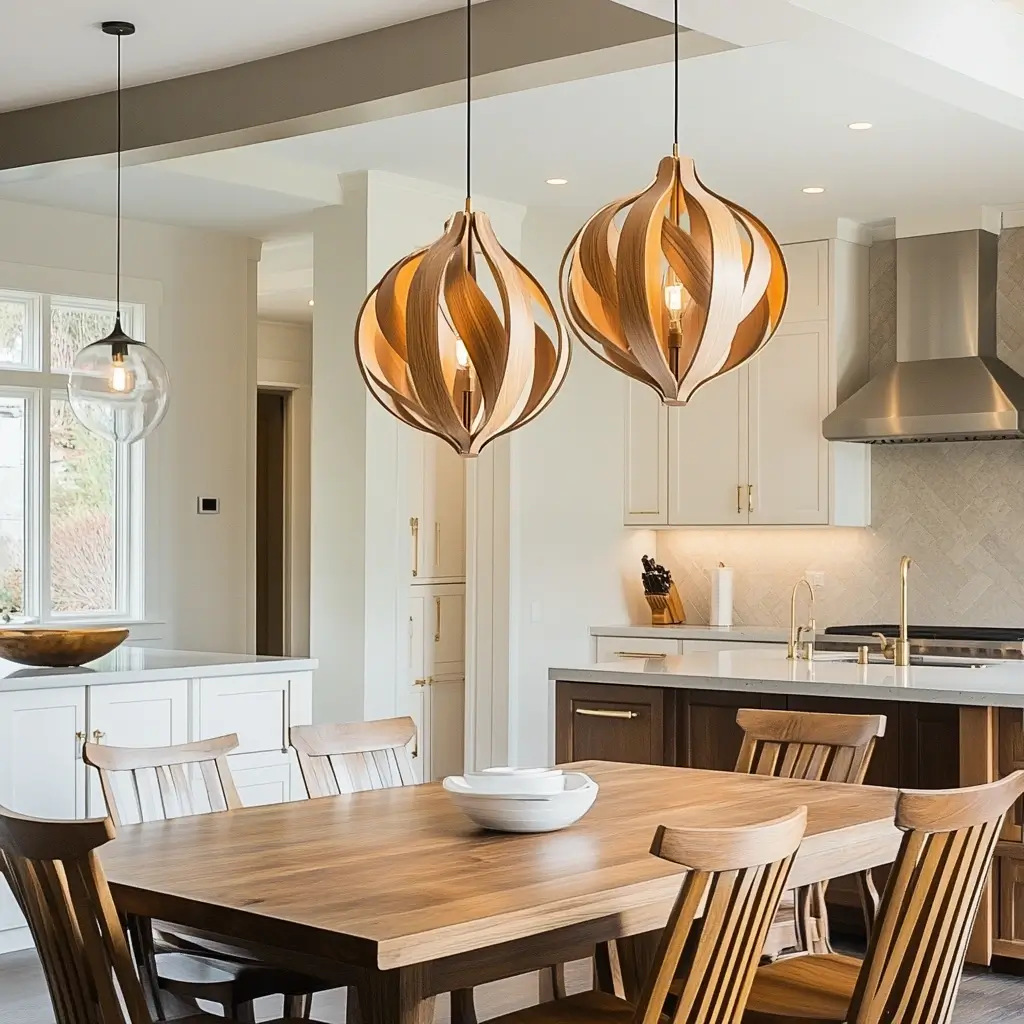
Wood elements add warmth and a natural feel to your kitchen and dining lighting, making the space feel cozier and more inviting.
- Kitchen: Mid-tone wooden fixtures with gold accents work well for a modern yet cozy style.
- Dining: A statement chandelier with wooden details or a sculptural wood and metal combination fixture adds a touch of sophistication.
Choosing matching wood tones while varying the design helps balance the two areas beautifully.
Pairing Recessed Lighting with Statement Fixtures in Kitchen and Dining Rooms
For a modern yet functional approach, recessed lighting in the kitchen pairs well with a bold fixture in the dining area.
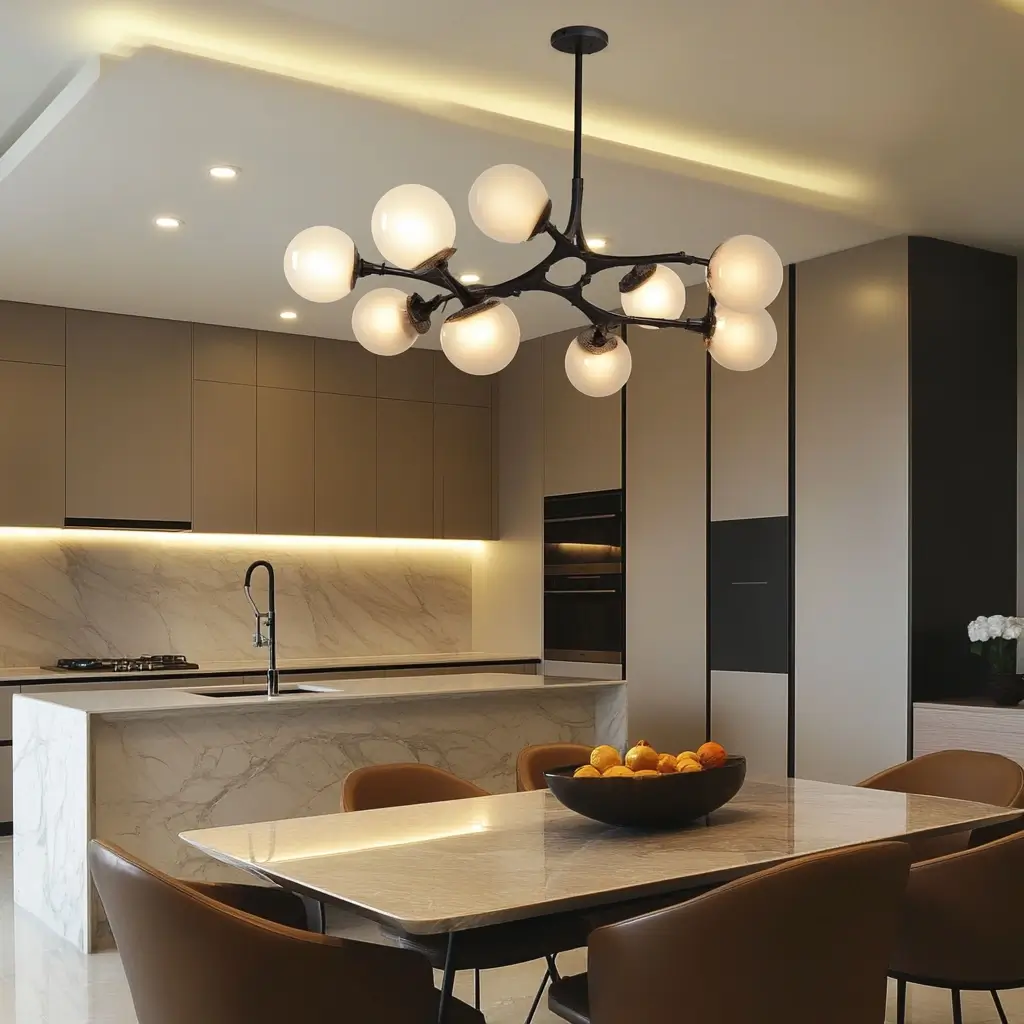
- Kitchen: Recessed ceiling lights or can lights offer bright, focused illumination for cooking and prep work.
- Dining: A striking chandelier with opaque globe shades brings a fashionable and dramatic touch to the space.
This combination ensures the kitchen remains practical while the dining area gets a show-stopping focal point.
How Does Brass Lighting Contribute to a Luxe Look?
Brass is timeless and sophisticated, making it an excellent choice for lighting.
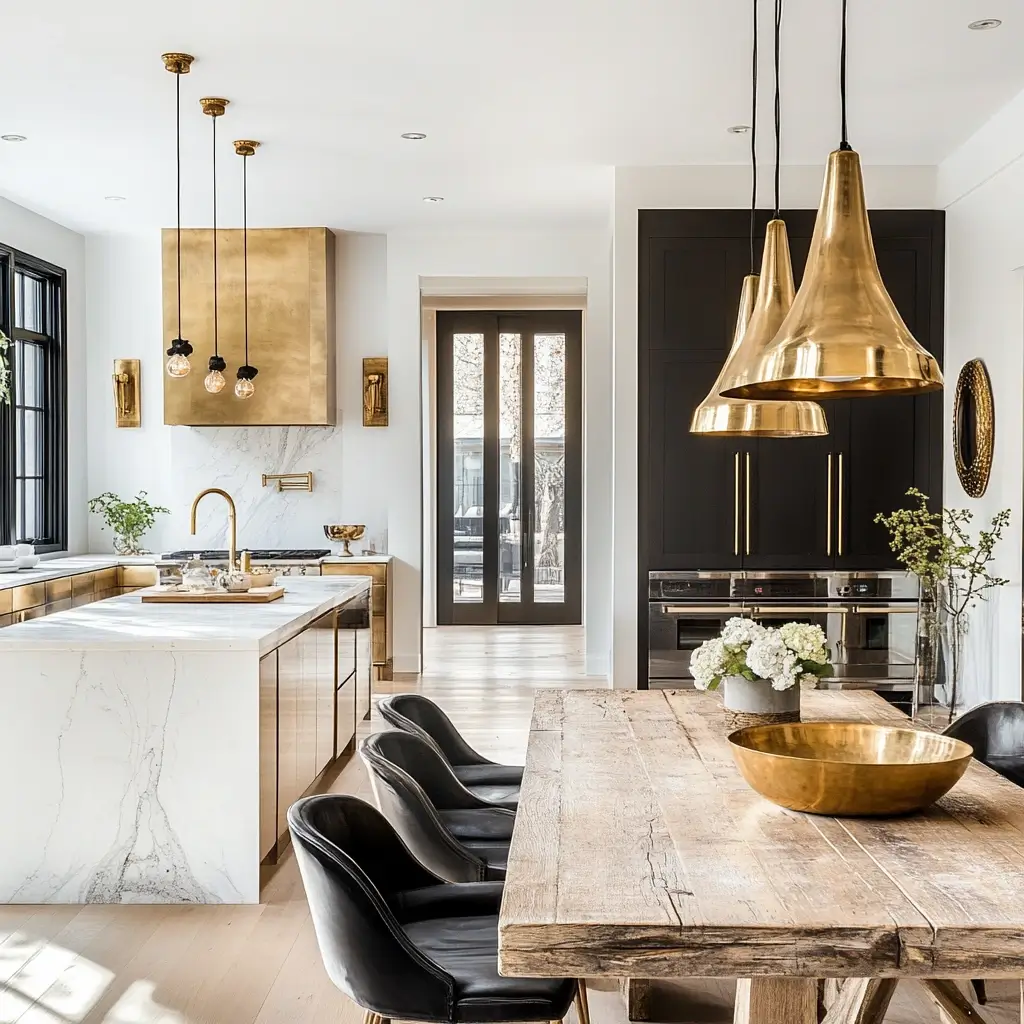
- Kitchen: Adjustable brass wall sconces or spotlights provide practical lighting, particularly over the stove or countertops.
- Dining: A row of elegant brass pendant lights or a bold chandelier completes the luxurious yet cohesive look.
Using the same metal finish in both areas creates a refined, polished aesthetic that adds warmth and sophistication to the space.
What Makes Pendant Lighting a Classic and Versatile Option?
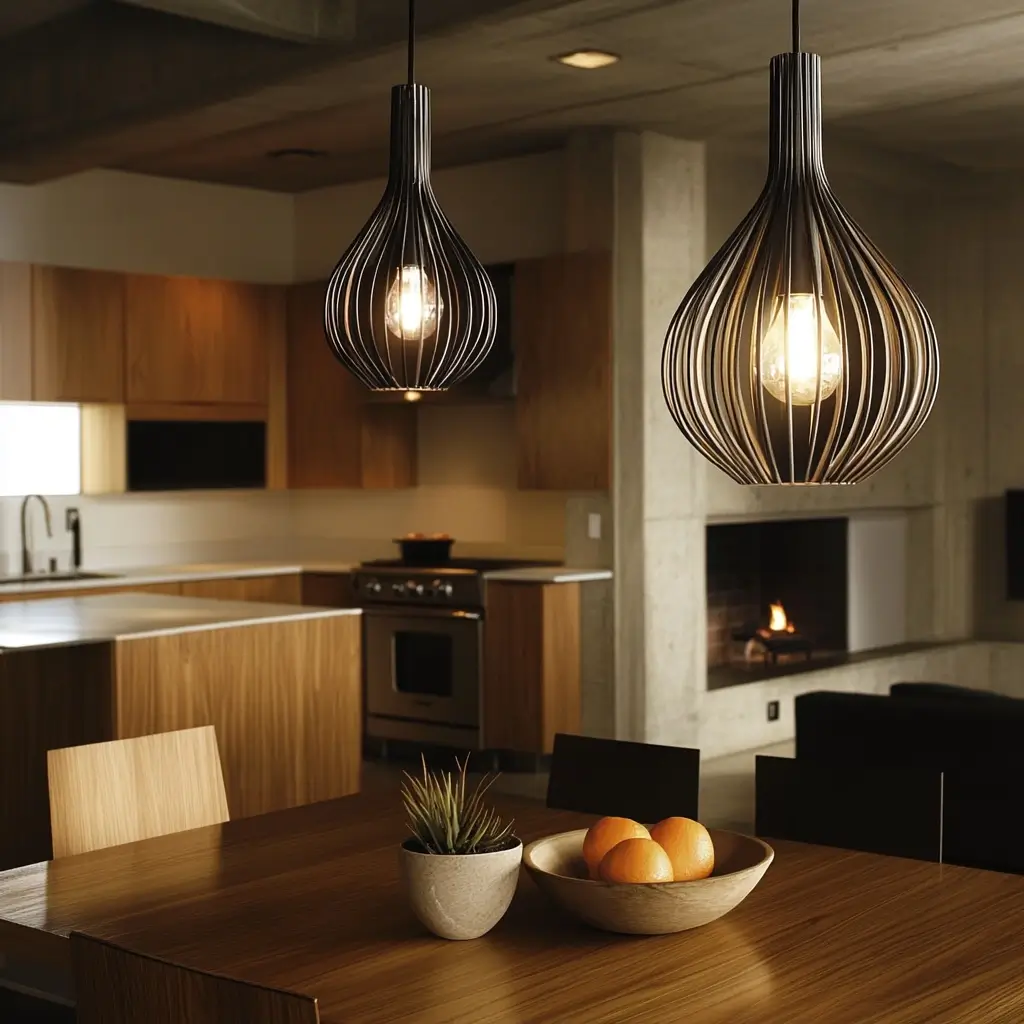
Pendant lights work beautifully in both the kitchen and dining area, and choosing complementary styles can elevate the entire space.
- Kitchen: Rounded, minimalist pendants provide ample light without feeling overpowering.
- Dining: A more intricate caged pendant or sculptural chandelier adds visual intrigue and contrast.
Mixing simple and ornate designs keeps the space dynamic while maintaining unity.
How Can Mixing Metals and Materials Enhance the Space?
For those who love an eclectic touch, mixing metals and materials can create a curated, designer feel.

- Kitchen: A matte black metal pendant light ties in with window frames or cabinet hardware for a contemporary touch.
- Dining: A striking gold or brass chandelier balances the space, echoing metallic elements from the kitchen.
Repeating a metal finish at least twice in each space ensures a cohesive, intentional look while maintaining a dynamic aesthetic.
Natural & Urban Contrast: Black and Greenery
Pairing black fixtures with natural elements creates a modern yet inviting aesthetic.
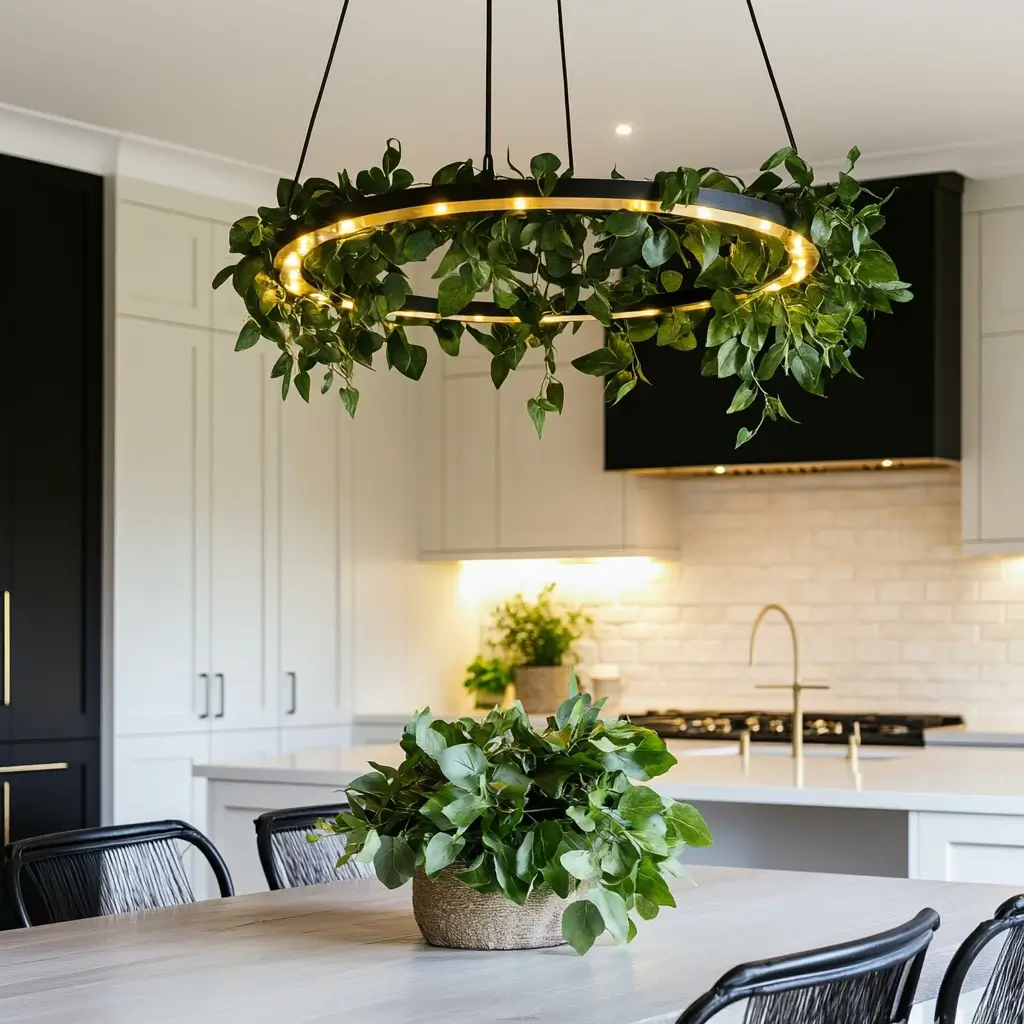
- Kitchen: A bold black and gold metal pendant light adds a sleek, contemporary edge.
- Dining: A foliage-covered ring chandelier or a nature-inspired fixture brings softness and warmth.
This contrast balances industrial and organic elements, creating a stylish fusion of urban and natural decor.
Classic Elegance: Traditional Chandeliers for Kitchen and Dining Room Lighting
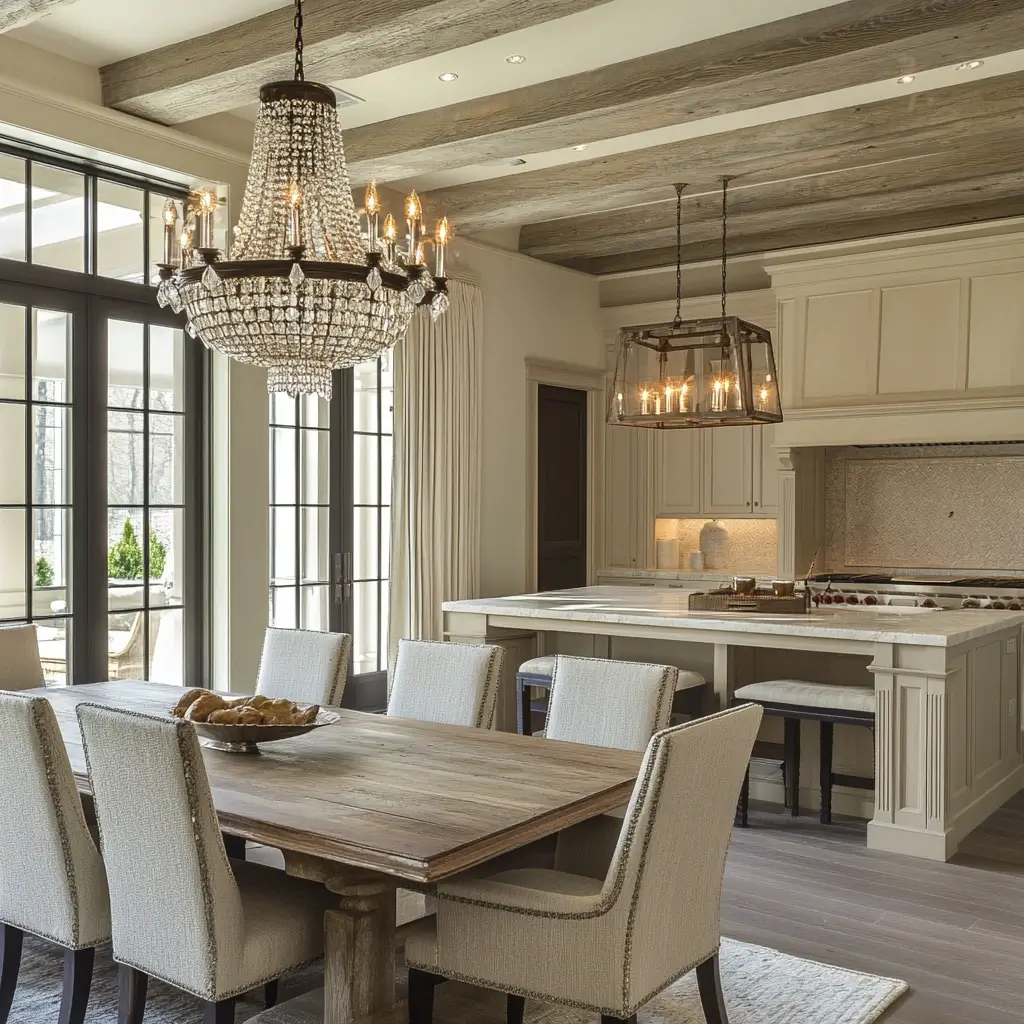
For those who love timeless elegance, chandeliers are a must-have in a dining space.
- Kitchen: A subtle rustic-style spotlight or mini chandelier adds a touch of charm without overwhelming the functional area.
- Dining: A grand, traditional chandelier over the table creates a luxurious, welcoming ambiance.
Pairing a statement chandelier with understated kitchen lighting keeps the space balanced and sophisticated.
Bold & Modern Chandeliers
Black metal fixtures have been trending, making them a striking choice for contemporary interiors.
- Kitchen: A row of black metal pendant lights provides a structured, modern feel.
- Dining: A dramatic chandelier with black metal accents and frosted glass diffuses soft light for a stylish contrast.
This pairing embraces boldness while keeping the overall look sleek and refined.
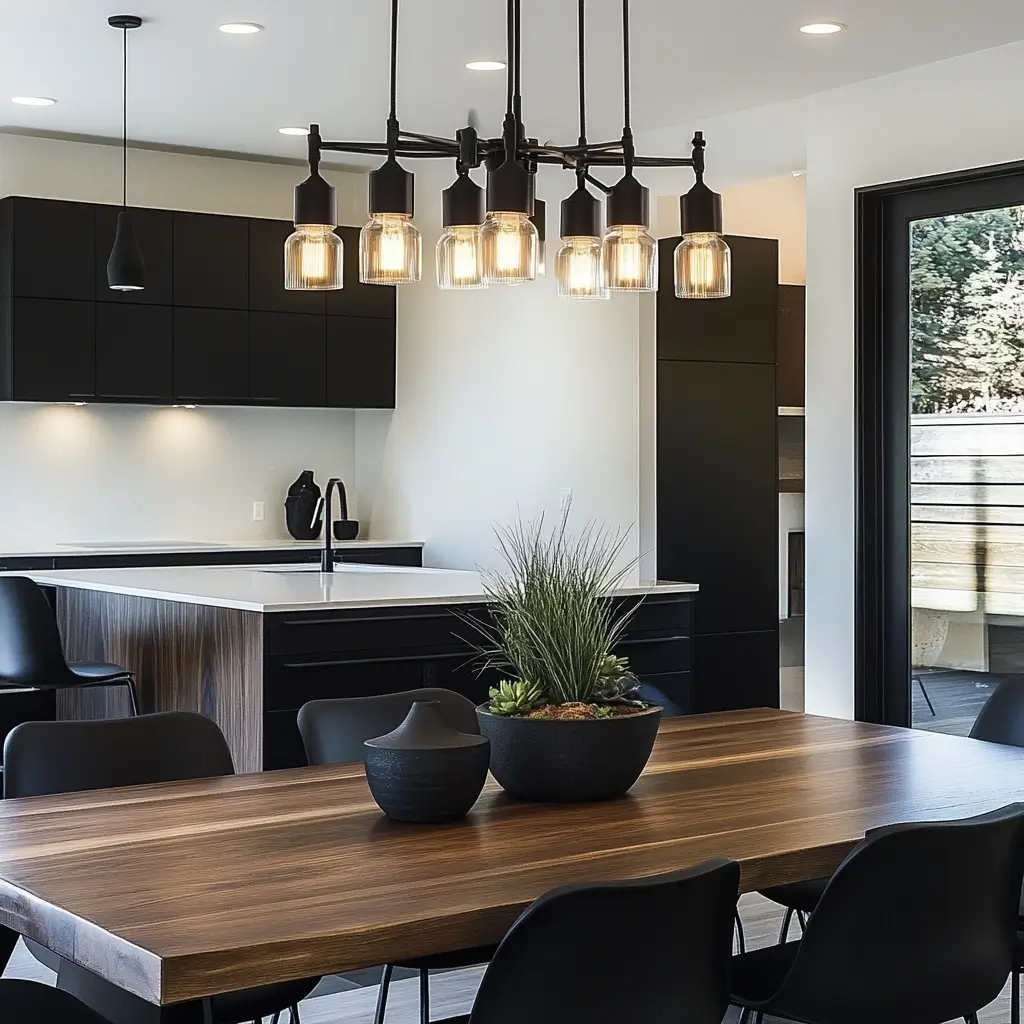
Final Thoughts on Pairing Kitchen and Dining Lights Effectively
The key to successfully pairing kitchen and dining lights is to create connection without uniformity.
- Pendant lights in the kitchen complement a more elaborate chandelier or fixture in the dining area.
- Matching metals and finishes create harmony, while varied designs add depth and interest.
- Mixing materials and styles can bring personality and a curated feel to your space.
Whether you prefer a classic, modern, or eclectic approach, experimenting with lighting combinations can transform your kitchen and dining area into a beautifully designed, functional space.
Frequently Asked Questions
Why is lighting balance important in an open floor plan?
Balancing lighting ensures functional brightness in the kitchen while creating a warm, inviting atmosphere in the dining area. It also helps define the spaces visually while maintaining cohesion.
Should pendant lights match the chandelier?
Not necessarily. While they should complement each other in style and finish, they don’t have to be identical. Mixing designs can add depth and interest to the space.
What are the best pendant lights for a kitchen?
The best pendant lights depend on the kitchen’s size and style. Minimalist glass pendants work well for modern spaces, while wooden or industrial-style pendants suit rustic or industrial themes.
How do I coordinate foyer and dining room lighting?
Choose fixtures with similar materials and finishes while varying the designs slightly. A statement chandelier in the dining area can be complemented by a subtler fixture in the foyer.
Can I mix different metal finishes?
Yes! Mixing metals like matte black and brass can create a curated, high-end look. Just ensure that each finish is repeated at least twice in the space to maintain cohesion.
